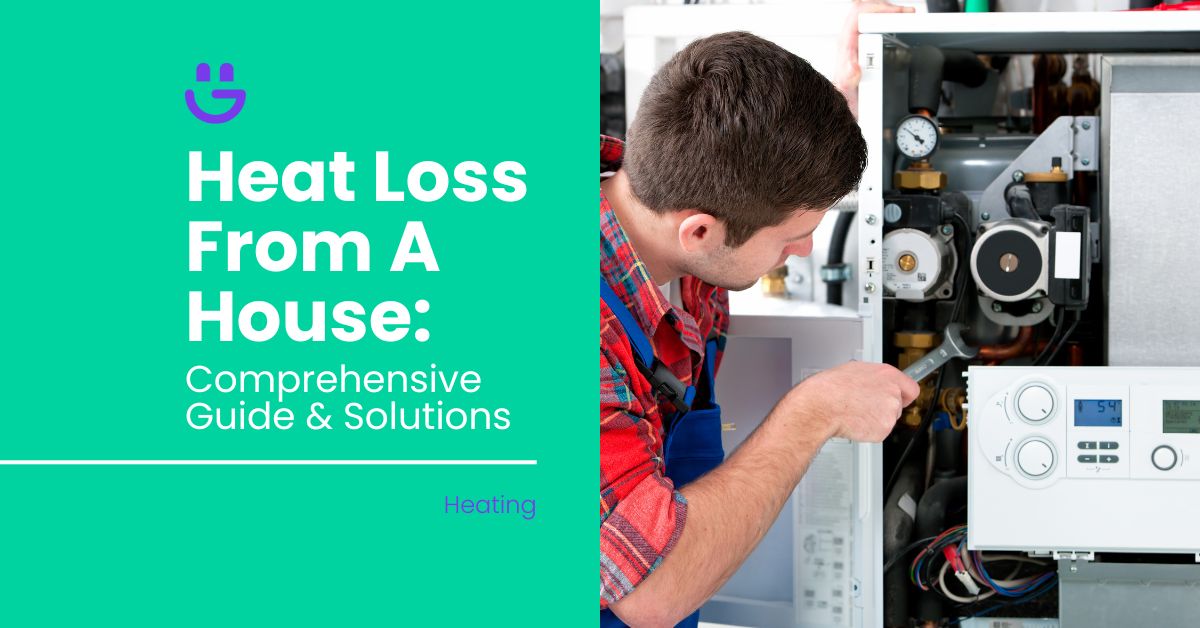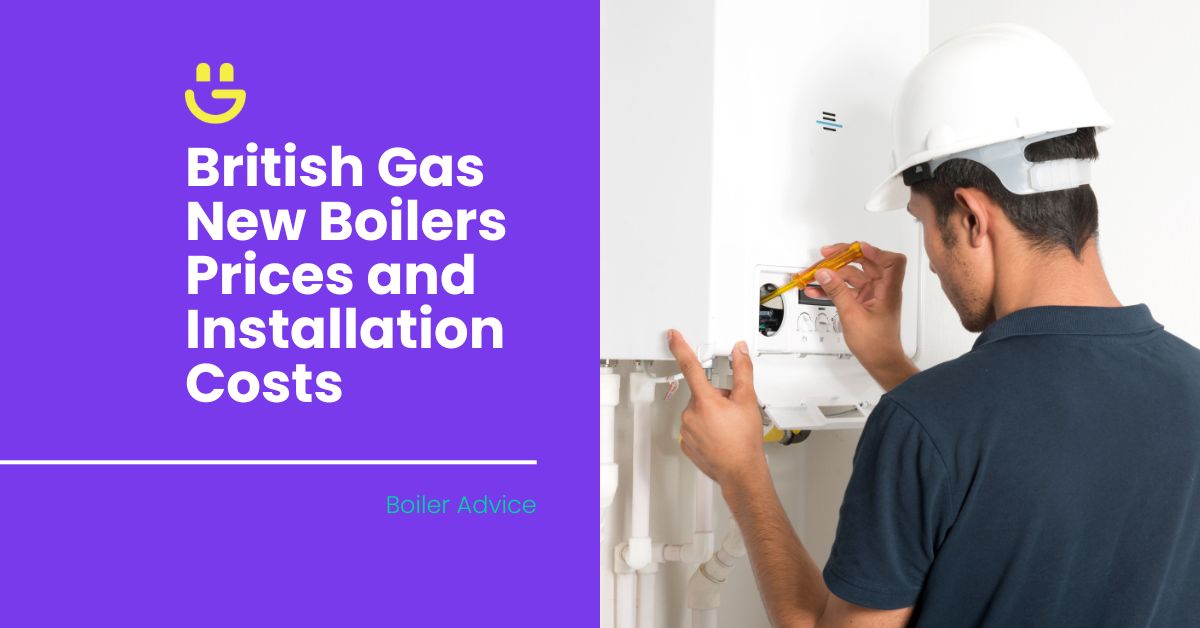Last Updated on November 14, 2025
Are your heating bills through the roof while your home is still freezing? That might be because your heat is also going through the roof!
Understanding where and how heat loss in your home occurs is the first step to tackling the problem. Effective home insulation results in greater living comfort and lower energy bills. It also benefits the environment because reduced energy consumption and fewer carbon emissions are eco-wins.
We’ll highlight the many solutions to your heat loss problem, including DIY jobs for home energy savings.
Contents
Understanding Heat Loss In A House
Heat loss occurs when the warmth generated within your home escapes. A house may naturally lose 2-3 °C in temperature overnight in winter; however, a poorly insulated property may lose over twice that.
The Thermal Envelope is a term used to describe the barrier between a home’s interior space and the external environment that keeps heat in and cold out. It includes walls, roofs, windows, and doors. Let’s dig into how your home may be losing heat.
- Walls: Without proper wall insulation, approximately 35% of a home’s heat escapes through the walls.
- Windows and doors: Inadequately insulated doors and windows will let cold air in and warm air out. 30% of the heat wastage occurs this way.
- Roof: An uninsulated roof can account for about 25% of the loss.
- Floor: Your floor can also contribute to heat loss – roughly 10%.
Consequences of unchecked heat loss
- Structural issues: Cold, damp conditions due to poor heating can compromise the structural integrity of your home. Wooden elements may deteriorate and materials may weaken.
- Mould growth: When warm air rises and condenses, it creates moisture which settles and might spawn mould. Mould damages surfaces and can also cause respiratory and allergy issues.
- Health: Damp, mould and grimly cold living conditions aren’t exactly conducive to great health.
Major Culprits Of Heat Loss
Let’s look at the main culprits to blame for your home losing heat.
Poor wall insulation
There are two main types of walls in UK homes:
- Cavity walls: These walls have a gap between two layers of brick which generally helps stop heat escaping. Most newer homes have cavity walls.
- Solid walls: Houses built in the first part of the 1900s will likely have solid walls. Without an air gap, they are more prone to losing heat.
Walls comprise the major part of the home’s structure and the main source of heat loss. Cavity wall insulation is relatively straightforward. It involves inserting special materials like spray foams into the gap to achieve stellar insulation results.
Solid wall insulation involves a choice between tackling the inside or outside of the walls. Special cladding can be applied to the external walls. Budget permitting, you can select an attractive finish. On the other hand, adding insulation to the insides means losing some floor space.
Financial assistance programmes are available to help homeowners cover expenses in this regard. Low-income households can apply for the Energy Company Obligation 4 (ECO4) grant to help finance their insulation.
Roof heat loss
We know that hot air rises. This also wouldn’t be a problem if it stays indoors and circulates. However, when it leaks out through the roof is a different story. Loft insulation prevents heat escape and ensures a happier, more energy-efficient home.
Roofs can be successfully insulated with:
- Spray foam
- Vermiculite materials like Micafil
- Special sealants applied to air gaps.
- Fiberglass
The long-term savings on energy bills can make the upfront outlay of loft insulation a rewarding investment.
Windows
In some homes, windows are a significant source of heat loss due to radiation through the glass and air leakage.
Double glazing is usually the go-to solution to combat this problem. Two layers of glass with a gap in between reduces heat transfer. However, double glazing involves replacing all your windows at a hefty cost. Read our guide on how much double-glazing costs for more information.
Secondary glazing is a more affordable alternative. With secondary glazing, an additional layer of glass or perspex is fitted inside to approximate double glazing.
Here are a few thermal efficiency tips to improve window insulation:
- Install draught strips to seal gaps around windows.
- Using heavy curtains can act as an additional heat-loss barrier.
- Installing thermal blinds that are designed to reduce heat loss.
Heat loss through the floor
While roughly 10% of your heat lost through the floor seems comparatively minor, this percentage can be a lot higher in homes with suspended floors or above unheated spaces. Some estimates suggest that adding insulation to suspended timber ground floors can reduce heat loss by 90%.
If your floor feels like an ice rink, you could consider underfloor heating. The only problem with this is that it will increase your energy bill.
Here are some more budget-friendly solutions to insulate your floor:
- Fitted insulation boards are a good option, especially for concrete floors.
- Spray foam insulation can be applied to fill gaps and provide excellent sealing.
- Laminates and batt insulation can be considered.
- Rugs and carpeting make nice winter home improvements.
According to Energy Saving Trust, floor insulation could save you around £50 in your heating bills annually.
Optimising Heating Systems
To improve the efficiency of your heating system, be diligent about your energy usage and make smart use of heating controls.
Adapting the boiler
Many households operate their boilers at higher temperatures than necessary. Lowering the temperature on your boiler is a surefire win for energy savings. Turning down the thermostat by a single degree can save homes £100 on their annual energy bill.
Today’s boilers are pretty efficient, converting over 80% of their fuel to heat. For ultimate optimisation, modern condensing boilers are excellent. They efficiently extract heat from both the combustion process and thermal energy from water vapour condensation. The result: over 95% efficiency.
Draught proofing
No one invites an icy draught into their home in winter.
Here are a few affordable DIY draught-proofing tips to keep this unwanted visitor out:
- Identify and seal gaps around windows, doors, and any other openings where cold air may enter.
- Use draught excluders (a rolled-up towel works) at the bottom of doors.
- Apply transparent film to windows to reduce heat loss while maintaining visibility.
- Fit keyhole and letterbox flaps.
You’ll be surprised how much you will save when you’re not cranking up your heating systems to combat arctic breezes. You can heat at moderate temperatures and still feel toasty and comfortable in your insulated castle.
Heating controls
Advanced heating systems include super-efficient controls:
- Programmable thermostats allow you to set specific temperatures for different times of the day.
- Smart thermostats offer advanced features like remote heat control (via a mobile app), pattern learning, and adjustments to the environment. They learn your lifestyle and heating needs, geo-track that you’re on your way home to start heating just ahead of your arrival, and collect insightful data to improve their performance. All of this is designed to achieve maximum efficiency. Check out our comprehensive list of the best smart thermostats for more information.
- Wireless heating zone control lets you control different areas (zones) of your house independently, directing heat where it’s needed.
Financial Assistance And Incentive Programmes
Acknowledging the cost of living crisis and being committed to net zero by 2050 the government backs several worthwhile assistance initiatives.
ECO4 scheme
The government’s ECO4 scheme obliges larger energy suppliers to provide energy efficiency and heating solutions to low-income and vulnerable households to help combat fuel poverty.
Qualifying homes can potentially get financial support for insulation, heating upgrades, and other measures to help warm their homes, increase their savings, and benefit the environment.
The Home Upgrade Grant (HUG) aims to provide efficiency upgrades and low-carbon heating via local authority funding.
Designed to be a win-win for local residents and the environment, these programmes may include grants or discounts for draught-proofing and heating home improvements. Qualifying homes could receive up to £5,000 in financial aid.
Boiler Upgrade Scheme for heat pumps
The Boiler Upgrade Scheme is committed to increasing the implementation of energy-efficient heating systems to help homeowners save money and reduce their carbon footprint.
If you qualify, you could receive up to £7,500 to install a heat pump to dramatically improve your home’s energy efficiency. £5,000 is also available for a biomass boiler.
Next Steps
- The next step in your home heating journey is to honestly evaluate your home for potential insulation weak spots. Get a professional assessment if you can.
- Since much of the housing stock in your community may be similar and losing heat in the same way, chat with your neighbours about their experiences and share useful information.
- Know that there are quick affordable actions you can take, such as using draught excluders and possibly adding secondary glazing to one or two windows in your main living space.
- Monitor and adapt your heating setup on an ongoing basis for best results.
- Be sure to check out the financial assistance schemes available to see if you qualify for these home improvements.
- Don’t hesitate to connect with Eco Happy for any guidance or quotes you may need.
FAQs
How does heat loss affect the environment?
Unchecked heat loss leads to higher energy consumption. This potentially means more fossil fuels being burned and more carbon emissions released into the atmosphere.
Can I get an air source heat pump under the Boiler Upgrade Scheme?
Funding for air-source and ground-source heat pumps can be applied for under the Boiler Upgrade Scheme. However, you will need to meet the necessary criteria to qualify.
When should you upgrade your heating system?
If you have a well-insulated home but have an old boiler (G-rated for example), chances are significant energy waste is occurring and an upgrade may be due.
Conclusion
Heat loss in your home can take place through the floor, roof, walls, doors, windows, and various other gaps and cracks.
However, you can do plenty to address these problems, including applying an insulating material to vulnerable zones. You also want to ensure your heating system is firing on all cylinders, efficiency-wise.
To help cover the costs of any home improvements, financial assistance schemes are available.
As a professional heating installer, Eco Happy is always willing to assist you with tailored advice, so contact us today.






Tom Allen
Solar Expert